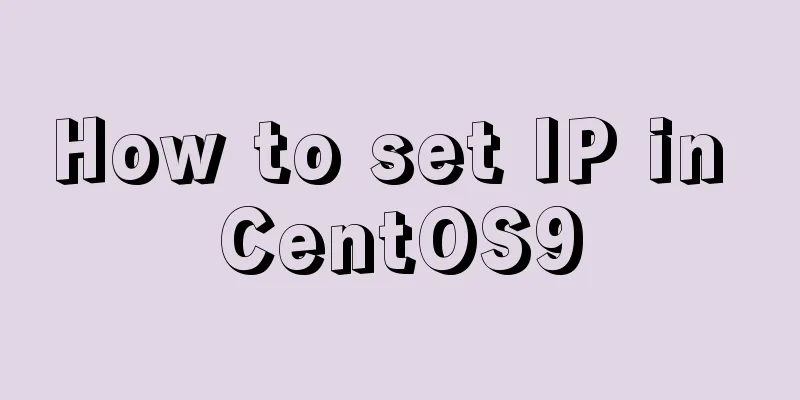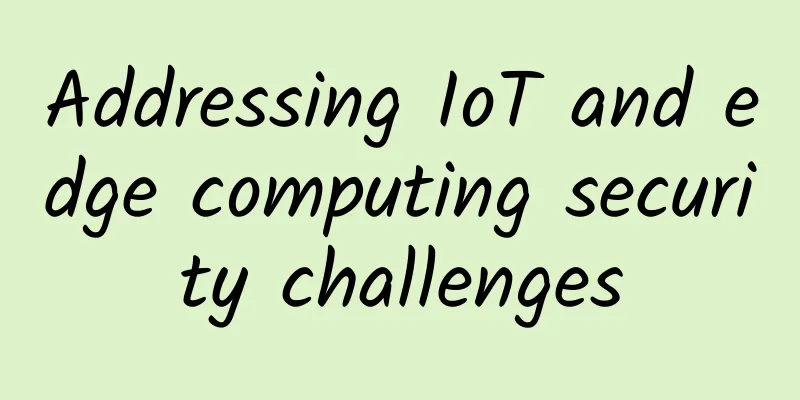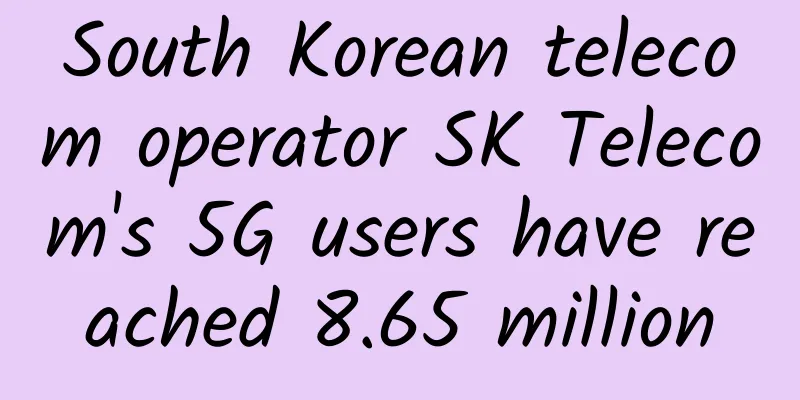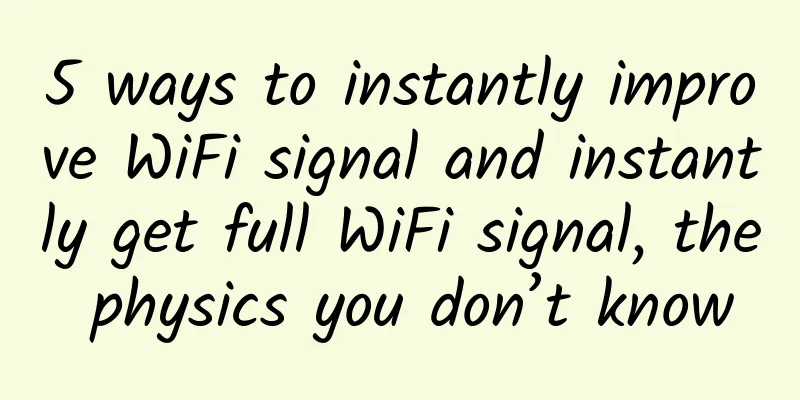5G is used to serve IoT, what will 6G be used for?
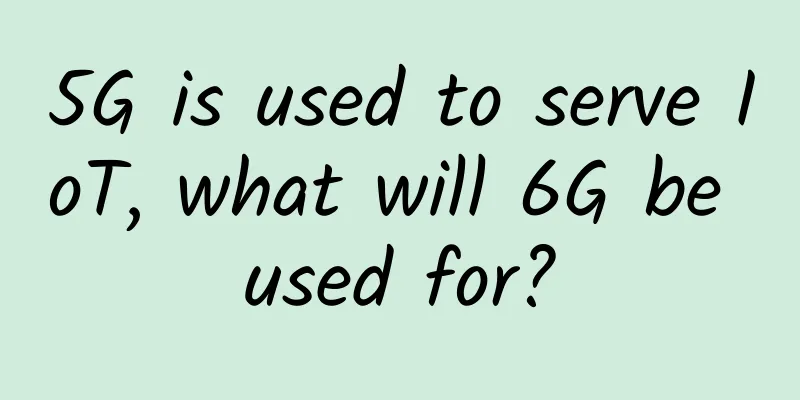
|
"5G is used to serve IoT (Internet of Things), so what is 6G used for?" This is a very interesting topic. We know that the vision of 5G is to connect everything. Since its birth, it has been tied to IoT. IoT also relies on the high bandwidth, high-speed transmission and low latency that 5G can provide to achieve the connection between things. However, after 5G has evolved from a concept to commercial use, and from a "goddess" to reality, people's expectations for 5G in the field of IoT do not seem to be as strong as before, and some even put their hopes for the realization of IoT on 6G. So, what improvements can 6G make to 5G? What benefits will 6G bring to communication networks? Which of 5G, 6G, and Wi-Fi 6 will be the real "companion" of IoT? With these questions, let's start with the opportunity of 5G and IoT. 5G is a necessary technology for the development of IoTAs early as 2018, China Mobile Zhejiang Company held a 5G experience conference, demonstrating the application of 5G in telemedicine, industrial Internet, AR/VR, holographic calls and other fields, unveiling the mystery of 5G. From the perspective of development, the previous 5G standard defined three scenarios: eMBB, mMTC and URRLLC. Among them, eMBB corresponds to broadband for large-scale mobile services such as 3D/ultra-high-definition video, mMTC corresponds to large-scale Internet of Things services, and URLLC corresponds to services such as unmanned driving and industrial automation that require low-latency and high-reliability connections. In the eyes of operators, 5G applications are high-definition video/AR/VR, large-scale IoT, high-reliability and low-latency driverless driving, and industrial automation. Therefore, 5G is indeed a necessary technology for IoT. As the number of smart devices increases rapidly, 5G that adapts to large-scale IoT is needed as a foundation, especially after the release of IPV6, each device has a unique identification code. In addition, high-speed and low-latency IoT applications require 5G technical support, such as unmanned driving, robot group control, and industrial automation. It can be said that with the support of 5G, the development of IoT has entered the fast lane. However, there are many types of IoT wireless communication technologies, including licensed frequency communication technologies, including NB-IoT and GPRS, and unlicensed frequency communication technologies, including WIFI, BlueTooth, ZigBee, LoRa, and NFC. Each has its own advantages and disadvantages and complements each other. In other words, 5G is a necessary technology for the development of IoT, and so is 6G to a large extent. 6G will realize the vision of the Internet of EverythingCommunications observer Xiang Ligang once pointed out: "The vision of 5G is to connect everything, but in fact 5G may not be able to achieve this goal. This goal may require 6G to complete." In other words, compared with 5G, 6G has more advantages and strengths, and can achieve the goals that 5G is pursuing. We know that 6G is the sixth generation of wireless technology for digital cellular networks, which will utilize the upper limit of the radio spectrum and support speeds of 1 Tbps (terabytes per second), and reduce communication latency by 1 microsecond, which is 1,000 times faster than 5G latency. In addition to providing higher throughput, 6G's higher frequencies will also enable faster sampling rates. This will further improve the performance of 5G applications and unleash the potential of growing data-demanding applications in the field of wireless imaging and sensing. In addition, 6G networks are also expected to provide extreme coverage extension while maintaining low power consumption. At the same time, as the successor to 5G networks, it will go beyond personalized communications and fully realize the Internet of Things paradigm, connecting not only people but also self-driving cars, robotic agents, and computing resources. In terms of virtual reality, 6G's low (micro-level) latency will enable users to interact in real time in an immersive environment. In terms of holographic telepresence, 6G networks will have enough bandwidth to transmit all 5 human senses in digital form to provide an immersive remote experience. In eHealth, 6G is expected to remove these barriers through remote surgery and improved medical workflow optimization. The ultra-low latency, high reliability and sophisticated intelligence of 6G technology will provide a tenfold gain in spectral efficiency. In IoT, 6G will connect all these devices as well as autonomous vehicles and sensors. In terms of robotics and driverless driving, connecting large autonomous transportation systems will require low latency and unprecedented levels of reliability to keep passengers safe. 6G technology is likely to pave the way for these connected systems through advances in software, hardware, and new connectivity solutions. Take one step at a time to make good 6G layoutPreviously, the "6G Overall Vision and Potential Key Technology White Paper" released by the IMT-2030 (6G) Promotion Group in 2021 described that 6G will expand from serving people and people and things on the basis of 5G to supporting the efficient interconnection of intelligent bodies, realizing the transition from the Internet of Everything to the Intelligent Internet of Everything, and ultimately helping human society realize the beautiful vision of "Intelligent Internet of Everything, Digital Twins". From demand to standards, and then to steady progress, the industry generally predicts that 6G will be commercially available around 2030. In other words, 6G technology still has ten years to go. It is reported that the University of Oulu in Finland is the first university to focus on 6G research and has created a 6G flagship program to explore various challenging research areas. In 2019, the Federal Communications Commission passed new rules to accelerate the deployment of new services in spectrum above 95 GHz. The Commission's first report and order, titled "Spectrum Horizons," developed a new experimental licensing section for the frequency range from 95 GHz to 3 THz. Researchers at Virginia Tech and companies such as LG and Samsung have already begun researching 6G technology. In addition, Japan is reportedly planning a comprehensive strategy to launch a 6G network by 2030. In China, research on 6G has not fallen behind, and is even at the forefront of the world. Huawei began to work on 6G research and development in 2017, two years before 5G was commercialized, and ZTE also established a dedicated 6G research team in 2018. OPPO, VIVO, Xiaomi and other companies in the first echelon of domestic smart devices have successively announced their 6G research and development plans. OPPO announced in 2020 that it will invest 50 billion yuan in 6G technology research in the next three years. In addition, the layout of 6G is not all about technology research and development and standard setting. As a continuation of 5G, the layout of 6G should first build 5G and widely carry out 5G business. It is reported that there are more than 1.6 million 5G base stations in China, and the number of 5G package users will reach more than 700 million by the end of 2021, relying on the revenue growth brought by 5G package users. Final ThoughtsThe IoT era is accelerating. As one of the communication technologies of IoT, 5G will play an important role and bring more help to the world. However, the development of IoT is also inseparable from the communication technology represented by 5G. In the future, 5.5G and 6G are likely to help the development of IoT. 5G is used to serve IoT, what is 6G used for? I believe everyone knows the answer to this question. Related reading 5G is used to serve IoT, what is 6G used for? |
<<: Brief discussion: What is cloud network?
>>: Four-stage hierarchical optimization to solve 5G network optimization challenges
Recommend
Comparison and conversion between IF sampling and IQ sampling
RF receiving systems usually use digital signal p...
Operators remove many 4G packages to make way for 5G, user experience may be affected
Recently, China Mobile's online business hall...
Kunpeng spreads its wings and shines its wisdom in Tianjin | The results of the finals of the Kunpeng Application Innovation Competition 2020 (Tianjin Division) are out!
On the afternoon of August 21, the final of the K...
The network is too slow to get a subscription?! A hardcore comparison tells you which is faster, 5G or Wi-Fi 6!
My wife, who has always been worried about her ch...
NetCloud: San Jose CN2 GIA line VPS monthly payment starts from 29 yuan, with 15 extra days for the first month
Wangyun (wangyun.net) is a Chinese hosting provid...
China Telecom faces four major challenges in network reconstruction of SDN/NFV practice
On July 11, 2016, China Telecom released the &quo...
Tungsten Fabric community arrives in China, first batch of members discuss the future of networking in the multi-cloud era
[51CTO.com original article] On November 7, as an...
[Double Holiday] spinservers: 1Gbps unlimited traffic server from $59/month - E3-1280v5, 32G memory, 1TB NVme, Dallas/San Jose data center
spinservers has released a promotion for the upco...
How should operators coordinate the development of 4G/5G during the “gear shift period”?
[[351567]] Recently, the two topics of "5G, ...
Don’t worry, tomorrow’s 5G may be “today’s high-speed rail”
30 seconds quick read 1. On the first anniversary...
Why the popular dual-band wireless router advantages tell you
Open the e-commerce website, dual-band wireless r...
5G messaging is about to be commercialized, and China Mobile plans to purchase technical support services
According to Zhongguancun Online, a "Notice ...
HostKvm 20% off: Korea/Hong Kong CN2 data center VPS monthly payment starts from US$7.6
HostKvm was founded in 2013. It currently provide...
Large-scale replication is the key to the development of 5G industry applications
The Ministry of Industry and Information Technolo...
Patent empirical analysis of opportunities and challenges in China's development of 6G communications
Compared with 2G communication network, 3G realiz...
![[11.11] LOCVPS: 30% off on all VPSs/50% off on some VPSs, 50 yuan bonus for 300 yuan top-up, KVM/XEN multiple computer rooms available](/upload/images/67cac23c1c8be.webp)
